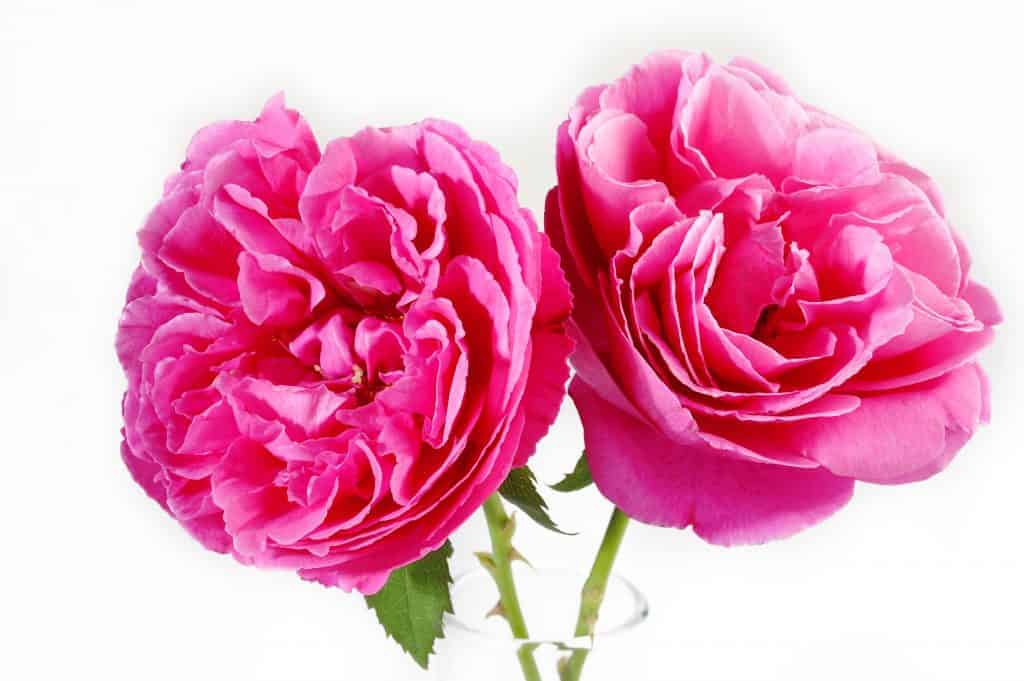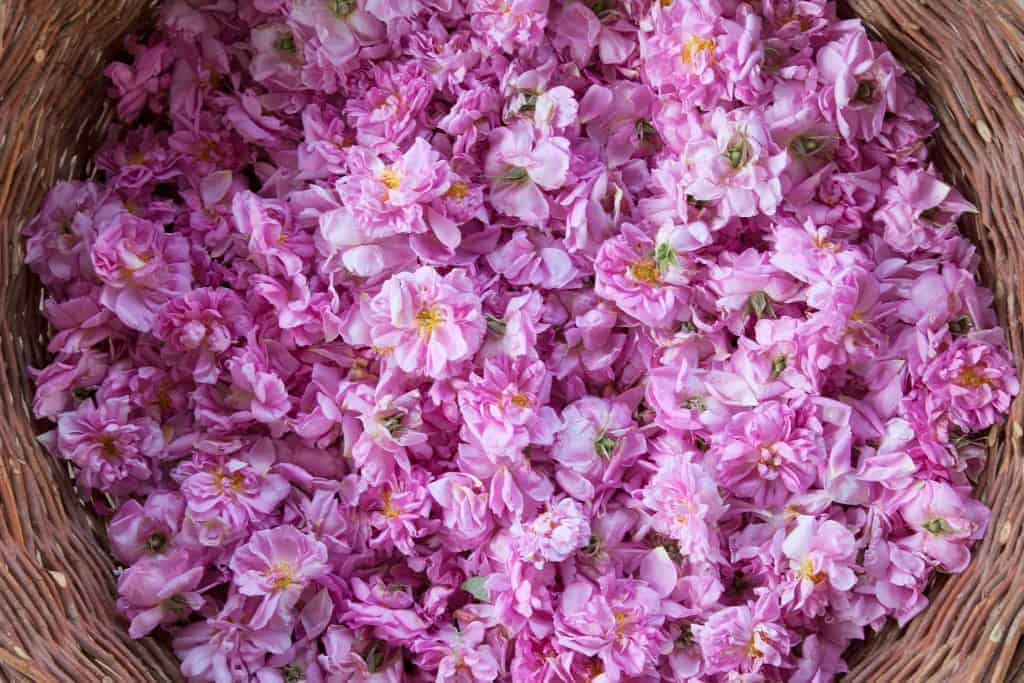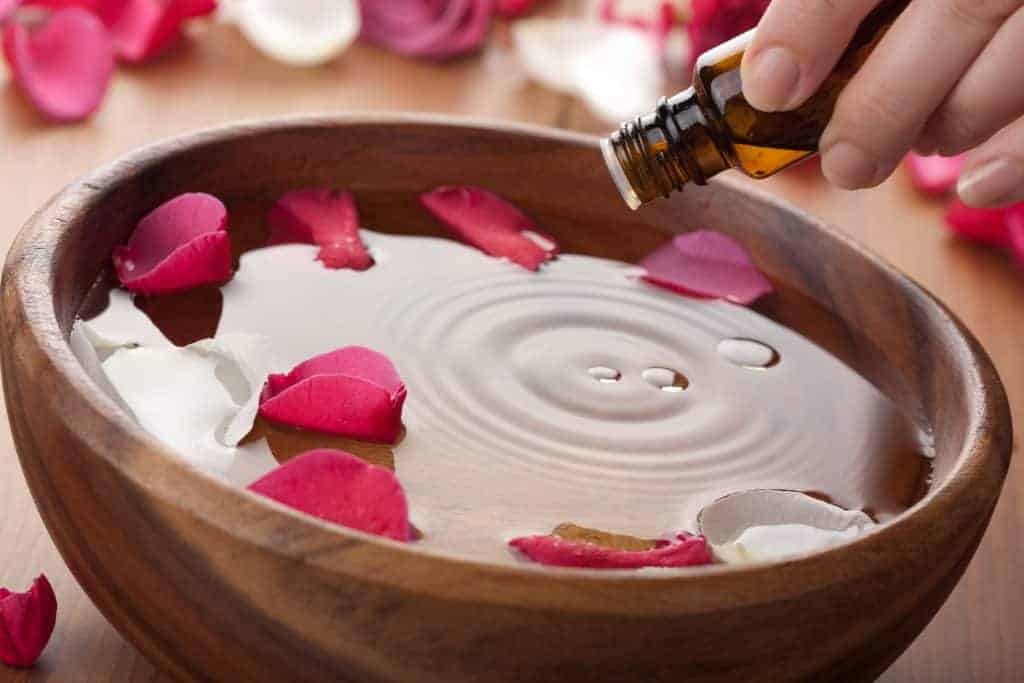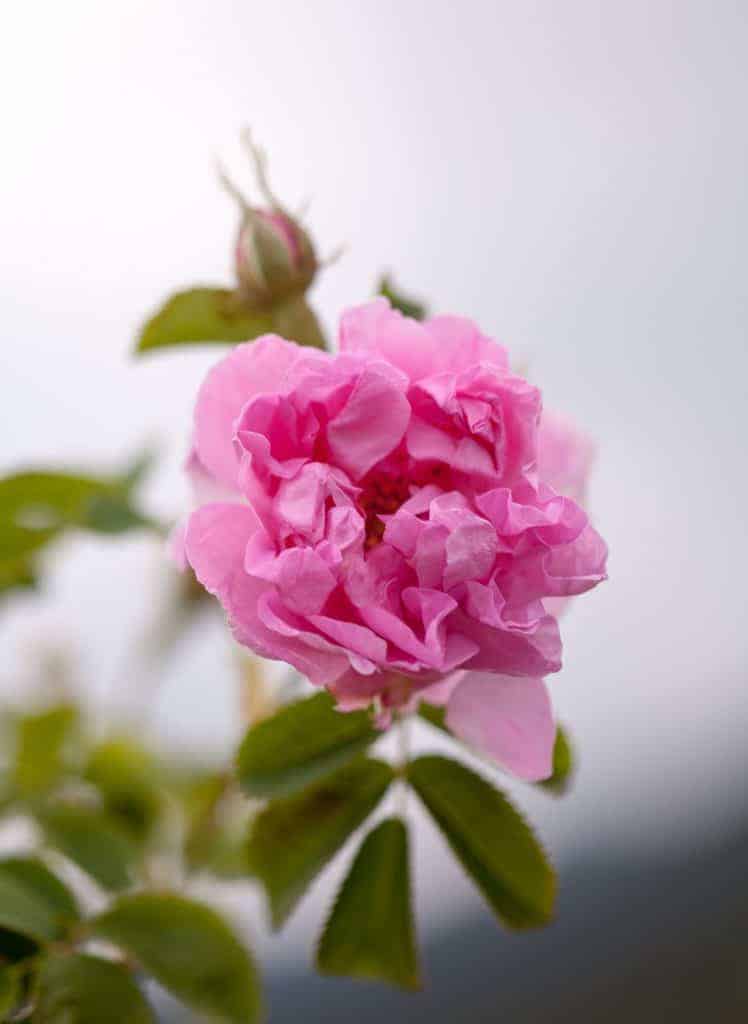A Rose By Any Other Name… Actually Would Not Smell as Sweet as Rosa Damascena
“A rose by any other name would smell as sweet.” Poor Juliet. So young. So in love. So much to learn. It’s a bit too late for us to catch Juliet and her Romeo up to the current sitch with roses. But it’s not too late for you! Because they don’t all smell as sweet. Just as you would give a widow white flowers, not red ones. You’re not trying to swoop in and steal their hearts (or are you?). No, you are trying to convey sympathy.
All forms of life are unique, roses included. Sure, they’re all a part of the Rosaceae family, but there are over 150 known species of roses. That’s like saying that you, who is taking the time to read about using organic, chemical-free rose water, is the same as that uncle whose main source of vegetables comes from eating fast food fries and corn syrup-laden ketchup. You know you don’t give off the same vibes, you’re related but not the same! You might even smell more sweetly, and so it is with Rosa damascena.
Mirror, mirror on the wall? What makes Rosa damascena the sweetest of all? We will transport through the annals of time, looking into how and why Rosa damascena is such an important plant, becoming an everlasting symbol of love. With its first uses as a heart strengthener and cough suppressant, Rosa damascena is now used in many beauty regimens and even as a natural insect repellent. Read on to find out how to get the most out of the versatile therapeutic benefits of Rosa damascena through the use of our organic rose hydrosol.

The Cultivation of Love
Rosa damascena, also known as the Damask rose, is a hybrid of Rosa moschata and Rosa gallica, cross-pollinated by Rosa fedtschenkoana. Rosa fedtschenkoana’s beginnings have been traced to the foothills of Asia, which means that is most likely where Rosa damascena was conceived. Here is where this special hybrid flower got its name; Rosa damascena was named after the city of Damascus. That name may sound familiar because today as Damascus is the highly contested capital of Syria.
Between 1254 and 1276 CE, Crusader Robert de Brie brought Rosa damascena to Europe. Its sweet aroma and beautiful petals made the Damask rose a favorite of Henry VIII. It was used as a symbol of love, displayed at weddings and festivals. Early into the 11th century CE, an Iranian doctor named Avicenna, discovered the process for extracting rose water from rose petals. Iranians began creating rose water and would spray it at weddings as a symbol of happiness. The Iranians believe so strongly in the power of the rose that they call it the “Flower of the Prophet,” in reference to Muhammad. It was from there that Iran became the largest exporter of rose oil and water around the world. The Damask rose’s was now added to perfumes as a symbol of love, as finishing touches on hairpins and finally, used therapeutically to fight illnesses all over Europe, Asia, and eventually North America.
Love Heals
In traditional medicine, rose oil was used in treating chest and abdominal pains including digestive and menstrual complications. Native Americans discovered that rose water was a gentle cough suppressant for children. Rose hydrosol mixed with honey, lavender, and lemon essential oil is sometimes used to gargle away a sore throat.
To this day, Rosa damascena continues to flourish in Middle Eastern countries such as Iran and Turkey, in Europe, and in India. The reason for this is because it thrives in full sunlight and humid climates. It grows in abundance in an area of Bulgaria called “Rose Valley.”
The Rose Valley is located south of the Balkan Mountains. At an altitude of 710 m, May and June sees the perfect storm of air humidity, cloudiness, and precipitation. Light rain, high humidity, and strong morning dew make for a high yield of Rosa damascena. In fact, 85% of the rose oil on the market comes from the Rose Valley. We, as well, use Bulgarian roses that are certified organic to create our rose hydrosol.

Rose Hydrosol: Love in a Bottle
After Damask roses are hand-picked from Bulgaria’s beautiful “Rose Valley,” they go through the process of steam-distillation to extract the oil from a rose. Purified distilled water is steamed upon organic rose petals. As the steam rises, it causes the plant cells to burst, releasing the rose’s oils and essence into the steam. The oil goes through a condenser and is collected in a vessel to be sold as essential oil. The petals of a Damask rose being so tiny, possess small quantities of essential oil. It takes roughly 100 kg (3,527.4 oz) of rose petals to produce 1 oz of rose oil, although some production yields seem to require 140 kg to produce that 1 oz.
During the process of steam-distilling Damask roses, a by-product is created. This is the fragrant water remaining after the oil is collected. It still has the same components as essential oil – containing bits of it suspended in the fragrant water – but is less concentrated, making it less abrasive and more suitable for all manners in which you might use Rosa damascena.

Rosa Damascena: The Science of Sweetness
When using essential oils, floral waters, or hydrosols for healing, we are using the chemical compounds naturally contained within a plant for therapeutic purposes. There are over 200 chemical compounds in the Damask rose. When the petals are steam-distilled, the rose’s chemical components are released into the steam. As the oil is collected, more organic materials will be left behind from the oil and are captured within the hydrosol as well as the water from the steam used to distill the oil. This is why we are committed to having our products come from certified organic sources. We are capturing all the beneficial compounds that come from roses, but if pesticides were used in their cultivation, the toxic chemicals would be collected as well. In non-organic roses, the residues of harmful pesticide chemicals may be released into the steam, corrupting the purity of the essential oils or rose waters. Certified organic roses allow the purity of the compounds naturally present to be condensed for use.
Here’s some information about those four naturally-occurring main chemical compounds:
Citronellol
Citronellol is part of a class of phytochemicals called terpenes. Terpenes were created in the evolution of plants. In order to keep predators at bay, citronellol within the plant gives off an aroma that deters pests from eating its leaves. However, the sweetness of citronellol is also what attracts bees, hummingbirds, and us. Citronellol also has antimicrobial and anti-inflammatory properties that can be used on mosquito bites.
Phenyl ethanol
Phenyl ethanol is the organic compound that gives off the floral aroma we associate with roses. It is considered an alcohol, because of its molecular structure, and has astringent properties. This is why rose hydrosol is great for treating blemishes or for use as a toner. As it is milder than essential oil, rose water can be applied directly to your skin. After washing your face and before moisturizing, spritz your skin with some organic rose hydrosol.
Geraniol
Geraniol is considered both an alcohol and a monoterpene and is part of what gives the Damask rose its sweet, floral scent as well as a component in other oils like citronella, geranium, and lemon to name a few. It helps effectively repel mosquitoes. Geraniol is also a natural antioxidant.
Nerol
Nerol falls into the category of compounds known as monoterpenes and creates a fresh, sweet odor which is part of the sensuous experience we recognize as rose. A study was conducted where 63 postmenopausal women inhaled either neroli oil, very high in nerol content, or a control (almond oil) twice a day for five days. As compared to the controlled groups, the groups who used the neroli oil had increased sexual desire, lower blood pressure, and improved pulse rate.
Spreading the Love

Now that we know all the deliciousness that comes from using rose hydrosol, how do we implement its use in our everyday life?
You can use rose hydrosol as a facial mist or toner. After cleansing your face, spritz yourself with rose hydrosol. It revitalizes skin, making for a more youthful appearance.
Rose water can help soothe tired eyes, try applying to an organic cotton round and laying over closed eyes. It is also great for soothing sunburn and bug bites.
You can make an enhanced hydrating spritz by adding a few drops of rose or another favorite essential oil, a few drops of organic jojoba oil, ¼ tsp glycerin, and ¼ tsp organic aloe vera juice to your rose water. This variation will be extra moisturizing.
Rose hydrosol can also purify the air or act as a great linen spray. Some use it for a twist on a favorite cocktail or mocktail. Or, simply add generously to a bath, throw in some rose petals, and your favorite organic essential oil (always dilute for use in the bath with a natural carrier oil).
However you decide to incorporate rose hydrosol into your everyday life, be sure that you are using a product whose source has been certified organic. You want to maximize the benefits without causing harm to yourself and the environment. Using hydrosol made from Rosa damascena is a sustainable, healthy way to improve your mood, reduce nervous tension rejuvenate your skin and your senses, and to send a message of love to yourself or anyone you choose.
A rose by another name may be a member of the Rosaceae family, but it certainly will not be as sweet and soothing as Rosa damascena.
